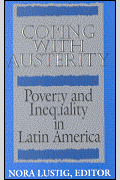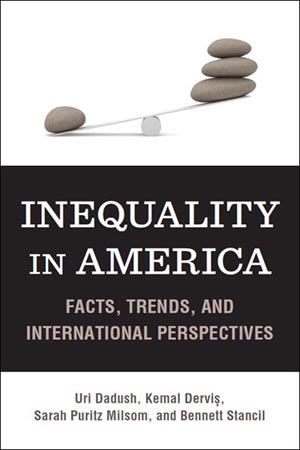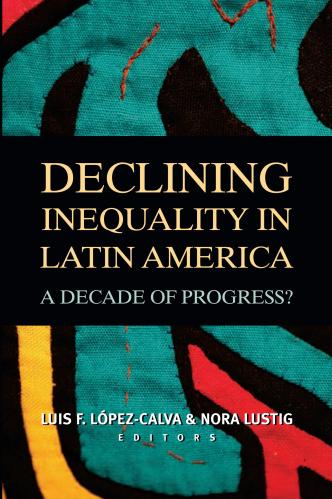As American students settle into the classroom for the start of the 2017 school year, we’re taking a look back at some of the most relevant recent education research and analysis from Brookings and affiliated experts. From the issues shaping K-12 and higher education to the state of the teaching profession, catch up on these six facts about education and learning in the U.S. to start the school year off right.
1. When college students use computers or tablets during lectures, they learn less and earn worse grades
Step into any college lecture and you’ll find a sea of students with laptops and tablets open, typing as the professor speaks. But do these devices actually help college students learn? According to Susan Dynarski, Economic Studies nonresident senior fellow, the answer is “no.” As she explains, a growing body of evidence suggests that when college students use computers or tablets during lectures, they actually learn less and earn worse grades than their peers who take notes via hand.
Though she points out that there may be some classroom settings in which laptops improve learning, (coding classes, for example) “for the typical lecture setting, the best evidence suggests students should lay down their laptops and pick up a pen.”
2. Salary inequality among public school teachers is low compared to other occupations, but disparity in pay remains an important issue in education
In a new report from the Brown Center on Education Policy at Brookings, Senior Fellow Michael Hansen and Research Analyst Diana Quintero examine data on inequalities in public school teacher compensation and its relationship to inequalities in school funding and teacher pensions. They find that overall salary inequality is low among teachers compared to other professions, and that “teacher salaries show very little evidence of inequalities based on either race/ethnicity or gender.”
However, teachers do experience relatively high levels of salary inequality based on experience, education, and geography. “In light of an aging workforce creating a growing number of teacher vacancies, and a new generation of increasingly mobile millennial teachers,” Hansen and Quintero write, “these findings have important implications about how public resources are allocated across teachers and students.”
3. Healthy school lunches can boost student outcomes
In a post on the Brown Center Chalkboard, researchers Michael Anderson, Justin Gallagher, and Elizabeth Ramirez Ritchie discuss their study exploring whether access to more nutritious school lunches is linked to improved student learning.
Their research, which spanned five academic years and included all public schools in California that report test scores, found that in years when a school contracted with a healthy lunch company, students at the school scored better on end-of-year academic tests. On average, student test scores were about four percentile points higher, and the test score increases were about 40 percent larger for students who qualified for reduced-price or free school lunches. (These students were also the ones who were most likely to eat the school lunches.) As the researchers conclude, “Increasing the nutritional quality of school meals appears to be a promising, cost-effective way to improve student learning.”
4. The median lifetime earnings for individuals with a bachelor’s degree are twice that of those with only a high school diploma
Is getting a college degree worth the investment? According to recent Hamilton Project research, although the labor market return to a college degree varies, those with postsecondary degrees generally have higher lifetime earnings than those who do not. As the report explains, the typical bachelor’s degree holder earned about $1.2 million over a lifetime—about $600,000 more than the average high school diploma holder and about $300,000 more than the average associate’s degree holder.
5. DACA can increase accessibility to higher education for undocumented students
Following President Trump’s announcement that he plans to phase out the Obama-era Deferred Action for Childhood Arrivals (DACA) program, the fate of the some 800,000 young adults brought to the U.S. without documentation is unclear. Brown Center Research Analyst Diana Quintero and Governance Studies Fellow Elizabeth Mann write that this move could have serious implications for students, as DACA can increase accessibility to higher education for undocumented residents.
As the authors note,
At the most basic level, deferred action may encourage students to apply for college in the first place without fear of deportation. Further, work permits available through the program may enable them to get a higher-paying job, which in turn could help them finance higher education more easily. This benefit is particularly important since many DACA-eligible individuals are from low-income families, and undocumented individuals do not have access to federal financial aid. Finally, the work authorization available through DACA may help undocumented immigrants with college degrees improve future employment opportunities and earnings.
6. Nearly one in six public teaching positions will be vacated and will likely need a replacement before the next school year.
Li Feng, a former nonresident scholar in Governance Studies, notes on the Brown Center Chalkboard that there were 3.6 million full-time-equivalent public school teachers in the United States in 2015, according the National Center for Education Statistics. Of these, 8 percent exited public school teaching during the following year, and another 8 percent moved to a new school. Combined, this means nearly one in six public teaching positions will be vacated and will likely need a replacement before the next school year.
Feng asserts that “with this level of turnover in the teaching profession, the dynamics of who leaves and who stays put can have important consequences.” Her analysis showed that while the rates at which teachers leave the profession vary widely based on performance and location, one study in Florida showed that some of the “best and brightest teachers” are leaving public schools, which she believes is of particular concern.
Feng proposes that policymakers focus on retaining these top-quality teachers through incentives, including individualized compensation packages and other efforts focused on motivating the best teachers to remain in the profession.







Commentary
A back-to-school primer: 6 facts about the education system and learning in the US
September 8, 2017